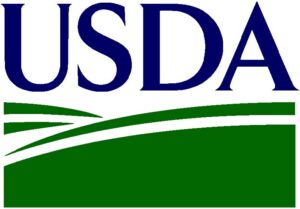Every Vermont food producer that I have talked to wants to produce the safest food possible for their customers and consumers, which is great! In my previous WAGN blog, and in a recent blog with the Vermont New Farmer Project, I talked about FDA’s proposed rules for the Food Safety Modernization Act (FSMA). As mentioned in those posts, not all  food producers and processors will be (or currently are) legally required to follow particular regulatory requirements due to their size of operation or the type of products they produce. However, all value-added producers can and should utilize some basic Good Manufacturing Practices, or GMPs, which are basic best practices for food safety. GMPs are also essential to meeting FDA and USDA food safety requirements, and are a key pre-requisite for Hazard Analysis and Critical Control Points – or HACCP – programs, which are required for certain food products and by some food buyers.
food producers and processors will be (or currently are) legally required to follow particular regulatory requirements due to their size of operation or the type of products they produce. However, all value-added producers can and should utilize some basic Good Manufacturing Practices, or GMPs, which are basic best practices for food safety. GMPs are also essential to meeting FDA and USDA food safety requirements, and are a key pre-requisite for Hazard Analysis and Critical Control Points – or HACCP – programs, which are required for certain food products and by some food buyers.
The key Good Manufacturing Practices and associated programs processors should have in place include the following:
1) The grounds where the food is processed must be free of weeds. Processing facilities must have cleanable surfaces and adequate handwashing and restroom facilities.
2) The equipment and utensils used for processing must be constructed of adequately cleanable materials and suitable for their intended use.
3) P ersonnel working in the facility should not work if they are sick. Also, they must follow good personal hygiene practices when working and have proper training on doing their task safely.
ersonnel working in the facility should not work if they are sick. Also, they must follow good personal hygiene practices when working and have proper training on doing their task safely.
4) Systems must be in place to check incoming raw materials for safety and to assure that suppliers have effective food safety programs in place.
5) A robust cleaning and sanitation program.
6) Allergen control programs for the 8 major allergens
7) Pest control to control rodents, insects and other pests
8) Chemical control. This includes cleaners, sanitizers, lubricants and related chemicals used in the facility.
9) Glass control. This includes covering glass light bulbs and monitoring glass packaging and any other glass in the facility.
10) Foreign material control to prevent plastics, metal, wood and other such materials from getting into the food product.
11) Receiving, storage and distribution programs for ingredients, packaging, and the final product; and finally
12) Traceability and recall systems so the processor knows where their ingredients came from and where their products are going.
UVM Extension has a fact sheet on GMPs, as well as on various other aspects of food safety.
UVM Extension has a number of upcoming food safety training courses:
- Food Labeling for Food Producers – March 21, 2013, 6:30-8 p.m., Vermont Food Ventures Center, Hardwick, Vt. · To Register, Please Call 802-472-5362
- Food Safety Regulations, Including Canned Foods Regulations – March 28, 2013, 1-3 p.m., Burlington, Vt. · Register Online
- HACCP for Food Processors – April 17, 2013, 1-4 p.m., Burlington, Vt. · Register Online
- Food Safety Regulations, Including Canned Foods Regulations – April 18, 2013; 10:00 a.m. – 12:00 p.m., Brattleboro, Vt. · Register Online
- Food Labeling for Food Producers and Processors – April 18, 2013; 1-3:30 p.m., Brattleboro, Vt. · Register Online
- HACCP for Meat and Poultry Processors – May 29-31, 2013, Berlin, Vt. · Register Online
Please feel free to email me at londa.nwadike@uvm.edu if you have questions on this information or any other areas of food safety.






